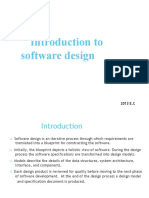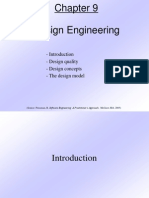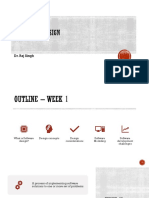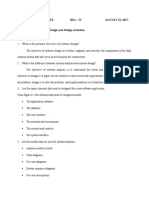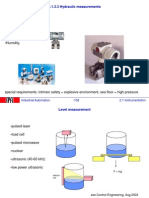0% found this document useful (0 votes)
57 views32 pagesSEPM Module 3
The document outlines the software design process, emphasizing its iterative nature and the importance of translating user requirements into a structured design that guides coding and implementation. It discusses key design principles, quality attributes, and the significance of technical reviews in ensuring design quality. Additionally, it introduces design patterns and their classifications, highlighting their role in creating flexible and maintainable software solutions.
Uploaded by
2004sahilmaskarCopyright
© © All Rights Reserved
We take content rights seriously. If you suspect this is your content, claim it here.
Available Formats
Download as PDF, TXT or read online on Scribd
0% found this document useful (0 votes)
57 views32 pagesSEPM Module 3
The document outlines the software design process, emphasizing its iterative nature and the importance of translating user requirements into a structured design that guides coding and implementation. It discusses key design principles, quality attributes, and the significance of technical reviews in ensuring design quality. Additionally, it introduces design patterns and their classifications, highlighting their role in creating flexible and maintainable software solutions.
Uploaded by
2004sahilmaskarCopyright
© © All Rights Reserved
We take content rights seriously. If you suspect this is your content, claim it here.
Available Formats
Download as PDF, TXT or read online on Scribd
/ 32

















